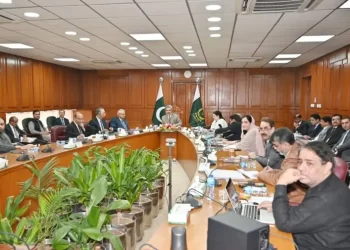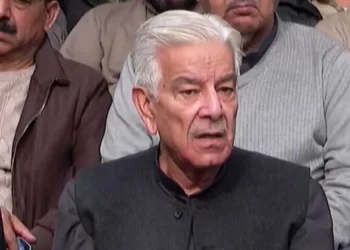- U.S. Secretary of State Antony Blinken spoke in Finland Friday about peace talks in Ukraine.
- He said negotiations now, before a Ukraine counteroffensive, would be unwise.
- “The prerequisite for meaningful diplomacy and real peace is a stronger Ukraine,” he said.
KYIV, Ukraine (AP) — U.S. Secretary of State Antony Blinken said Friday that the United States and its allies should not support a cease-fire or peace talks to end the war in Ukraine until Kyiv gains strength and can negotiate on its own terms.
As an anticipated Ukrainian counteroffensive appeared to be taking shape, Blinken said heeding calls from Russia and others, including China, for negotiations now would result in a false “Potemkin peace” that wouldn’t secure Ukraine’s sovereignty or enhance European security.
“We believe the prerequisite for meaningful diplomacy and real peace is a stronger Ukraine, capable of deterring and defending against any future aggression,” Blinken said in a speech in Finland, which recently became NATO’s newest member and shares a long border with Russia.
His use of the term “Potemkin” referred to the brightly painted village fronts that 18th century Russian government minister Grigory Potemkin reportedly used to have built to create an illusion of prosperity for Russia’s empress.
Blinken repeated the U.S. view that “a cease-fire that simply freezes current lines in place” and allows Russian President Vladimir Putin “to consolidate control over the territory he has seized, and rest, rearm, and re-attack — that is not a just and lasting peace.”
Allowing Moscow to keep the one-fifth of Ukrainian territory it’s occupied would send the wrong message to Russia and to “other would-be aggressors around the world,” according to Blinken, implying that a cease-fire shouldn’t be arranged until either Ukraine pushes Russia back or Russia withdraws its troops.
Blinken’s position is similar to that of Ukrainian officials, including his statement that Russia must pay for a share of Ukraine’s reconstruction and be held accountable for the full-scale invasion of its neighbor in February 2022.
After months of battlefield stalemate across a 685-mile (1100-km) front line, Ukrainian officials have given confusing signals about whether a counteroffensive, relying heavily on recently deployed advanced Western weapons and training, is coming or already underway.
Some have suggested the campaign will not be a barrage of simultaneous attacks across the entire front but rather a series of more targeted, limited strikes, first to weaken Russia’s supply lines and infrastructure, then expanded to broader targets with greater intensity.
Ukrainian President Volodymyr Zelenskyy weighed in again on Friday.
“This is not a movie,” he told reporters in Kyiv. “It is hard to say how you’ll see the counteroffensive. The main point here is for Russia to see it. And not just see but feel it. Especially, we speak about the troops that have occupied our territories. De-occupation of our territories – this is the result of our counteroffensive. When you see this, you’ll understand that it has started.”
Zelenskyy has said his goal is to drive Russian troops out of the four territories it partially occupies and illegally annexed last fall, as well as from the Crimean Peninsula the Kremlin illegally seized in 2014.
Putin has said two of his goals in invading Ukraine were to improve Russia’s security and prevent Ukraine from joining NATO but the Kyiv government has applied to join the alliance, and Sweden is hoping to be accepted as a member in July. That would surround Russia with NATO countries in the Baltic Sea.
Blinken described the Russian invasion of Ukraine as a catastrophic strategic failure for Moscow that had strengthened NATO, the European Union and Ukraine. Russia has become more isolated, he said, shackled to China as a junior partner in a relationship that Beijing has increasingly come to resent, and no longer able to use energy as a political tool in countries it once counted as its own or satellites.
For its part, Russia wants any talks to address Ukraine’s request to join NATO.
“Naturally, this (issue) will be one of the main irritants and potential problems for many, many years to come,” Kremlin spokesman Dmitry Peskov said Friday.
Blinken said Washington was ready to support peace efforts by other countries, including those by China and Brazil but that any peace agreement must uphold the principles of sovereignty, territorial integrity and independence.
China, which says it is neutral and wants to serve as a mediator but has supported Moscow politically, on Friday urged countries to stop sending weapons to Ukraine. The United States is a leading Western ally and supplier of arms to Kyiv.
In Kyiv, in the sixth air attack in as many days, Ukrainian air defenses late Thursday and early Friday intercepted all 15 incoming cruise missiles and 21 attack drones, Ukraine’s chief of staff, Valerii Zaluzhnyi, said.
The Ukrainian capital was simultaneously attacked from different directions by Iranian-made Shahed drones and cruise missiles from the Caspian Sea region, senior Kyiv official Serhii Popko wrote on Telegram.
A 68-year-old man and an 11-year-old child were wounded in the attack, in which falling debris damaged private houses, outbuildings and cars, according to Ukraine’s Prosecutor General’s Office.
Elsewhere, several explosions occurred Friday in the Azov Sea port of Berdyansk in the Russian-occupied part of Ukraine’s southern Zaporizhzhia region, one of the four provinces Russia illegally annexed. Russian-appointed officials blamed Ukrainian rocket attacks and said nine people were wounded. Videos posted on social media appear to show smoke rising in the port area. Ukrainian officials acknowledged their forces were responsible and claimed Russian ships were evacuating the port.
The Moscow-appointed governor of Ukraine’s occupied Donetsk province, Denis Pushilin, claimed Friday that Ukrainian strikes had killed three people and wounded four, including a 3-year-old-girl.
In other developments Friday, border regions of Russia again came under fire. One of the most frequently hit targets of cross-border shelling, Russia’s Belgorod region, was bombarded by artillery shells and drone strikes in multiple villages, Gov. Vyacheslav Gladkov said. At least two women died in a car, multiple people were injured, and apartment buildings, cars, power transmission lines and farm equipment were damaged, he said on Telegram.
The Freedom of Russia Legion, one of the groups that has claimed responsibility for prior attacks on Belgorod, blamed the Russian military for the deaths. The group alleged the Russian army had mistakenly believed the car belonged to the paramilitary group. Thousands of people have been evacuated from the region, and many roads have been closed.
Air defense systems shot down several Ukrainian drones in Russia’s southern Kursk region, Gov. Roman Starovoit reported. In Russia’s Bryansk region, Gov. Alexander Bogomaz said Ukrainian forces shelled two villages, with no reported casualties.
Two drones also attacked energy facilities in Russia’s western Smolensk region, which borders Belarus, officials said.
The U.K. Ministry of Defense said the incursions could be a Ukrainian strategy to disperse Russian forces before a counteroffensive.
“Russian commanders now face an acute dilemma of whether to (strengthen) defenses in Russia’s border regions or reinforce their lines in occupied Ukraine,” the ministry said.









